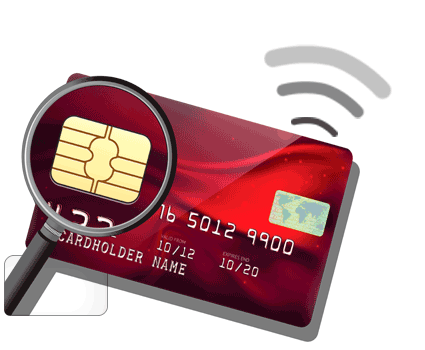RFID/NFC Contactless Testing
Overview
A Contactless Smart Card is like any smart card with an embedded integrated circuit (IC) but with an added internal antenna that can communicate data between the IC and the reading device. The communication is Radio-Frequency Identification (RFID) or Near Field Communication (NFC).When the card is within range of the reading device/contactless terminal the IC is powered through electromagnetic induction and transmits its data through radio-waves. The range of distance for Proximity Cards (bank cards) are up to 75 mm.
Transactions carried out by:
- RF Comms at 13.56 MHz (Incl. Anti-collision handling)
- Security Encryption processing
- Application Layer (EMV,MIFARE (Transport Sector))

Proximity Card / Contactless Smart Card
Integrated Circuit Testing
Testing helps ensure the security, integrity and reliability of the card at the point of transmission. CTI tests contact IC cards to recognised ISO/IEC standards - evaluating for consistency and functionality in-line with what is expected internationally. Making sure the card is manufactured to be tamper resistant is important for security after deployment.Cards must comply with ISO/IEC 7810 ID Cards - Physical Characteristics: General compliance & durability
Durability Tests:
- Functionality check carried out before testing
- Physical challenge test carried out
- Does the card still function?
Standards
-
ISO/IEC 14443-1 Contactless IC Cards - Proximity Cards - Physical Characteristics
- Antenna Location
- Alternating Magnetic Field
- PICC Maximum Loading Effect
-
ISO/IEC 14443-1 Amd 1 - Additional PICC Classes
- 6 types of Antenna dimensions, placement & occupied area
-
Manufacturing Design Process Also Involves:
- ISO/IEC 14443-2 RF Power & Signal Interface
- ISO/IEC 14443-3 Initialisation & Anti-collision
- ISO/IEC 14443-4 Transmissions Protocol